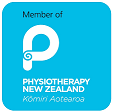
BY MAU KEELAN – SENIOR PHYSIOTHERAPIST
If you’ve had an injury, one of your main concerns may be when can I go back to sport? This is a tough question to answer and every injury is unique depending on its severity.
If you return back too soon, there is a risk of re-injury or developing a chronic problem that will lead to a longer recovery time. If you wait too long you can risk deconditioning or take on poor compensatory movement behaviours. This can be a very frustrating time for most athletes but the earlier you seek intervention, the smoother your recovery will be.
Here are some “tips” to help allow a safe return back to sport:
1. Get professional advice EARLY:When an injury happens it is important that you get professional advice early preferably from a Physiotherapist or a Sports GP. From here they will be able to give you:
- A diagnosis (What the injury is?)
- Timeframes (How long you will be off sport)
- Recommendations (Guidance on what you can and cannot do)
- Education on the injury with regards to healing
Most of us go straight to A&E where we are rushed through an Xray to clear a fracture, then given pain relief/ anti-inflammatories, crutches/moonboot and sent home with no further advice. Poor information is given to us on what to do after this. Seek help from a Physiotherapist.
2. If ACUTE, don’t wait! Start rehabilitation EARLY:
Early intervention is always the best way to faster recovery. Below I have listed common injury types including a Joint sprain eg: Knee/Ankle or a Muscle strain eg: Calf/Hamstring
Acute joint sprains (Shoulders/Knees/Ankles – Average timeframe 4-8 weeks):
- We are used to the R.I.C.E principle. Try the P.O.L.I.C.E principle
- Please take note of the “Optimal Loading” segment which encourages and promotes recovery:

Acute Muscle Strains (Average timeframe 4-8 weeks):
Evidence suggests that commencing rehabilitation early (2 days after injury, rather than waiting 9 days) shortened the interval from injury to pain-free recovery and return to sports by 3 weeks without any increase in the risk of re-injury.
Regular and controlled mechanical loading early after trauma is needed to reduce the adverse effects of protracted immobilization on muscle and tendon structures. (Bayer, Magnusson, Kjaer. NEJM, 2017).

3, Get a plan and set some goals:
It is important to make a plan! This will assist with “acceptance” of your injury and faster recovery times. Your Physiotherapist will help you design a “return to sport” plan and set some realistic goals considering the speed at which you need to recover and what can be done to prevent the injury from coming back.
Here are some general goals to consider:
- Normal range of movement. Compare the injured side to the non-injured side
- Decrease in pain to zero, decrease in swelling
- Strength of the injured part is 80-100% of the un-injured part
- To return to training at 80-100%
- To run or jump without pain
4. The dreaded “Waiting Game”

Here are some tips to help get you through “waiting game” of rehabilitation:
- Stay positive!
- Do not “break” the plan! Be patient!
- Continue to be involved in your sport. Being injured does not mean that you can’t move! Go to trainings and help out with these. Be a post, set up a cycle or just watch and do your physiotherapy exercises. There are plenty of things that you can be doing to remain active. Your physio should encourage and guide you with this.
- Don’t forget you can still continue training the un-injured areas.
- Now is a good time to work on “fine tuning” and working on your balance and stability
- You can also chat to your physiotherapist about “Mental Skills” eg: using imagery, self-talk and visualization to help with rehabilitation.
- Give back to the sport and offer to speak to the younger athletes in your chosen sport.
Your physiotherapist will carry out different types of fitness tests to determine whether you are capable of returning to play.Here is a basic progression of exercises after a lower limb injury that tests your ability to return back to sport:
- Walk with no limp
- Jog with no limp
- Sprint with no limp
- Figure 8, jog and run with no limp
- Quick zig-zag running with no limp
- Double leg hop
- Single leg hop maximally
- Non-contact sports specific drills comfortably
- Contact sport specific drills comfortably
- Return to full training at 80-100%
- Return to sport
Overall, your Physiotherapist wants you to return back to your chosen sport as safely as possible without having a re-occurrence.This requires for you to be patient and trust in your plan.
Recovering from an injury cannot be sped up!The best tools to make your rehab progress quickly are actually taught before you get injured. Making sure you are fit and strong for your chosen sport helps! You can recover faster and prevent more injuries if your body is conditioned for your sport.
 Maumahara Keelan is a physiotherapist working out of our Johnsonvile clinic.
Maumahara Keelan is a physiotherapist working out of our Johnsonvile clinic.
Want to see Mau?
Why not book online now at: https://northcityphysio.co.nz/booknow
Or call us on 0800 627497












